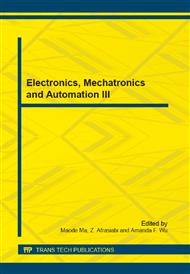p.64
p.69
p.77
p.82
p.87
p.93
p.98
p.107
p.112
Design and Implementation of an Interleaved Boost DC-DC Converter for PEM Fuel Cells
Abstract:
This paper elaborates a design and implementation of a 2-phase interleaved boost DC-DC converter as the power conditioning circuit for PEM fuel cells. The converter ripple current is analyzed so as to determine the inductance value, which would draw the fuel cell ripple current less than 4 % of its nominal value for a longer lifetime and efficient operation. Compact design is benefited from reduced inductor core volume due to paralleled connection as well as microprocessor-based control. Practical implementation is also discussed. Selection of simulation and experimental results is presented to validate the design methodology. The converter has the maximum output power of 1 kW at the output voltage of 120 V with the efficiency better than 92 %.
Info:
Periodical:
Pages:
87-92
Citation:
Online since:
October 2014
Keywords:
Price:
Сopyright:
© 2014 Trans Tech Publications Ltd. All Rights Reserved
Share:
Citation:


